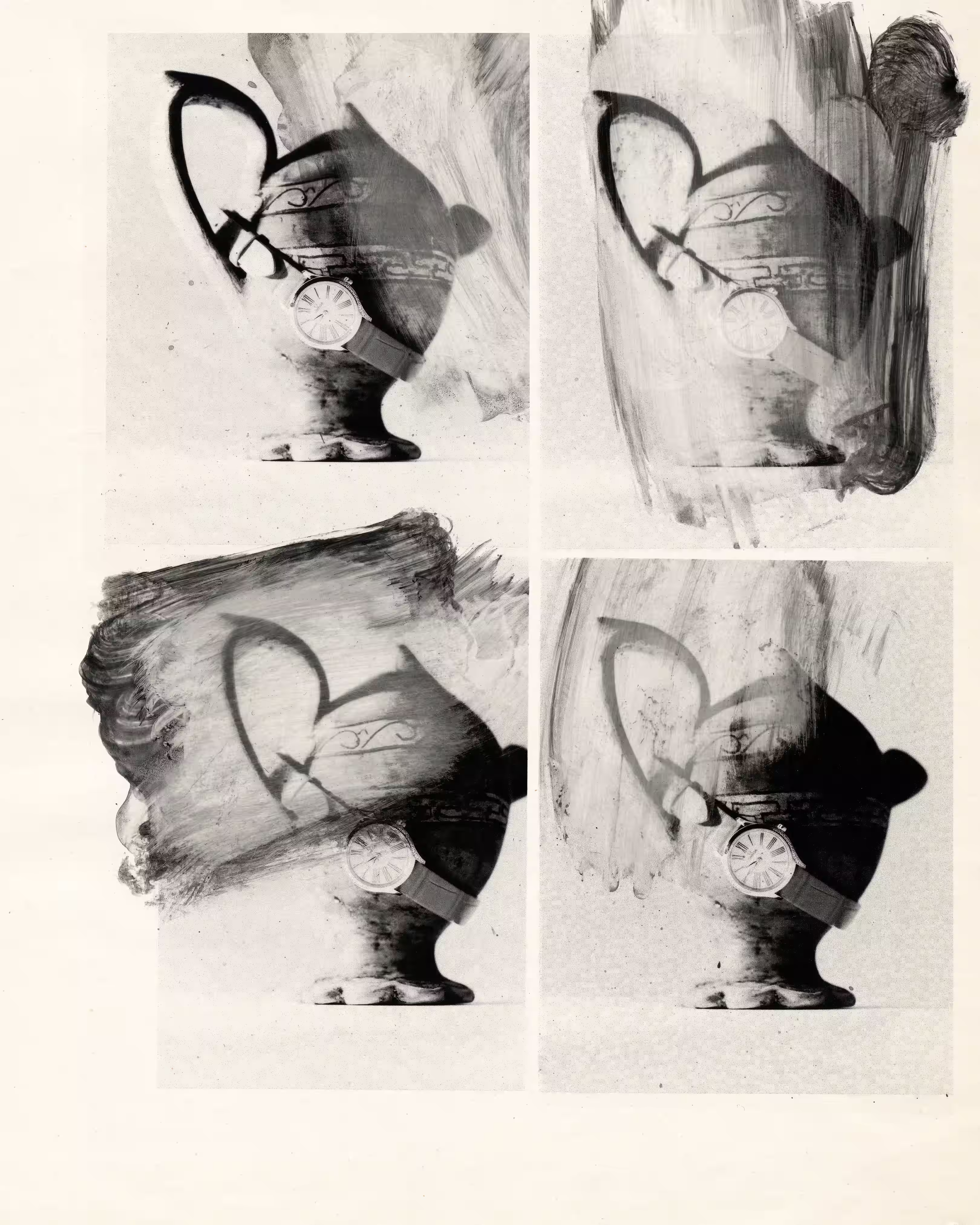_result_result.avif)
Contradictions have always played a role in designer Kelly Wearstler’s work. She’s a master multi-tasker with an exceptionally personal process that has altered contemporary American interior design, and she’s brought her maximalist touch to residences like Cameron Diaz’s whimsical West Village pre-war apartment and Gwen Stefani’s home in Beverly Hills, as well as luxury hotels across the world map.
Even through Zoom, I’m immediately drawn to the atypical background of her studio in West Hollywood. The layered wall texture, she describes, was achieved by taking a large metal grill rack and setting it into a few coats of plaster. “It is all about the different tensions that are created, whether it’s masculine-feminine or high-low,” explains Wearstler, whose well-honed instincts regarding color and texture combinations extend to her outfit that day: a striped Loewe long-sleeve top with a vintage, weathered khaki-green Comme des Garçons skirt. “It’s a risk, and sometimes you may have to pivot. But that’s part of the process, too.”
As expected, Wearstler’s home is an amalgamation of her signature style—vintage Illum Wikkelsø leather lounge chairs juxtaposed with historic neoclassical moldings. Built in 1926 and renovated in 1934 by architect James Dolena, the house was previously owned by Albert “Cubby” and Dana Broccoli, the original producers of the James Bond franchise (not to mention, rumored to be the family after which the vegetable was named). Before that, it was the home of actors William Powell and Carole Lombard. “Everyone has this fascination with Hollywood and the conversations that went on within these walls,” says the designer.
“It’s all about the next big thing because things change so fast here.”
—Kelly Wearstler
There’s a precious nature that comes with preserving history, but with Wearstler’s designs, personality is crucial. This philosophy manifests in a new project with Nynke Koster. The Hague-based artist is best known for preserving the ceilings and moldings of meaningful buildings and replicating the monuments into rubber objects. Likewise, for their collaboration, Koster immortalized Wearstler’s mansion by casting key design elements into rubber furniture—from stools to a bench, chair, and mirror.
Wearstler’s downtown LA warehouse, on the other hand, is less glamorous than the hills above it—and even more gluttonous. Perusing her expansive collection of furniture, you see all the different ways that she has successfully translated her aesthetic across various materials, collaborations, and styles: rare 1970s swivel chairs by Paul R. Evans, a pair of Ron Arad Rover Chairs, Åke Axelsson’s armchair for Gemla, and more. It’s a true documentation of her evolution as a designer through these past 30 years. “In LA, we’re not rooted in any form of tradition,” she adds. “It’s all about the next big thing because things change so fast here.”











.avif)








.avif)





.avif)

_result_result.avif)

_result_result.avif)
.avif)

_result_result.avif)


_result_result.avif)


.avif)




.webp)

.avif)



















%20(1).avif)
.avif)




.avif)
















.avif)


.avif)





















.jpeg)

.avif)

_11%20x%2014%20inches%20(2).jpg)







.avif)

.jpg)

%20(1).jpg)
.avif)
.jpg)

.jpg)
.webp)


.webp)



.webp)


.webp)


.avif)









.avif)
.avif)

















.avif)









.avif)



.avif)




















-min_result.avif)









.avif)







3_result.avif)
_result.avif)






_result.avif)




.avif)




.avif)













.avif)

.avif)











.avif)

.avif)










.avif)



.avif)


_result_result.avif)
















-min_result.avif)






.avif)
.jpg)
















_result.avif)

.avif)


.avif)







.avif)





.avif)

_result.avif)



.avif)















.avif)









.avif)


.avif)














.avif)




.avif)








.avif)

.avif)

.avif)



.avif)


.avif)




.avif)

.avif)

.avif)
.avif)
%20(1).avif)
.jpg)

%20(1).avif)








.avif)
.avif)

.avif)






.avif)



















.avif)
.avif)
